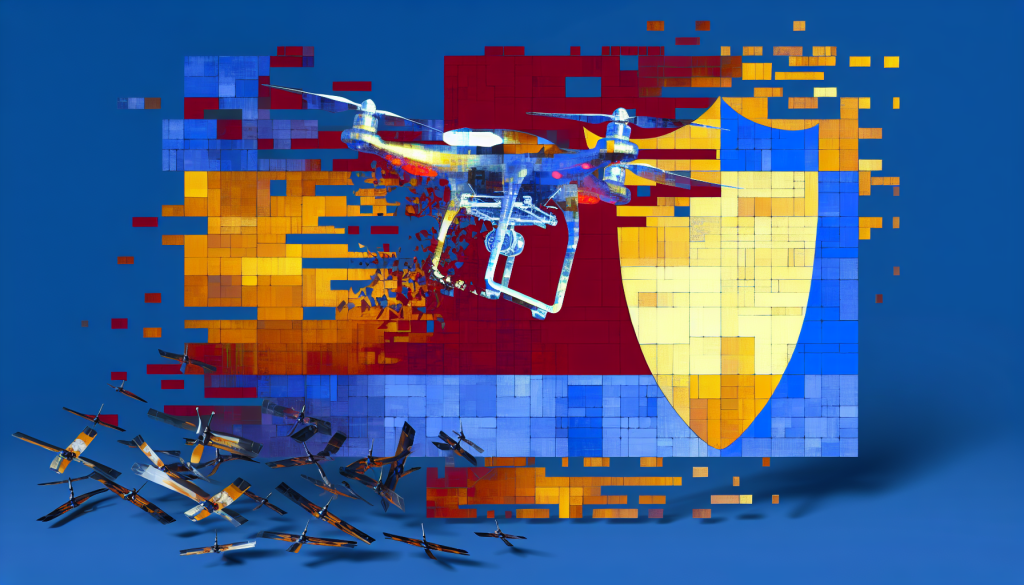The Rise and Fall of DroneShield’s Stock
A Spectacular Run Followed by a Steep Fall
DroneShield, the Australian defense-technology company, experienced a remarkable surge in its stock price, shooting up by more than 577% year-to-date and over 65% just in September 2025. But this hot streak took a daunting turn on October 2, 2025, when the company’s shares plummeted by 19%, marking a critical sell-off as investors decided to lock in profits after a frenetic rally. Reportedly, the ASX-listed shares dropped 9.76%, stirring discussions about a potential “mega crash” within one of the year’s hottest defense stocks.
Why the Stock Was Hot
The unprecedented demand for anti-drone technology has been a driving force behind DroneShield’s soaring share price. In an era marked by geopolitical tensions, the company has carved out a niche by developing counter-UAS systems that are critical for defense, law enforcement, and the protection of vital infrastructure. Notably, recent high-profile orders from the U.S. Department of Defense served as a catalyst for the rally, establishing DroneShield as a darling of the market, albeit at valuations that some experts deem unsustainable.
Profit-Taking Amid Sky-High Valuations
Despite the momentum and remarkable sales growth, analysts raised eyebrows at DroneShield’s soaring price-to-earnings ratios above 100 and a price-to-sales ratio hovering around 40, significantly higher than its defense counterparts. Some investors, wary of these inflated valuations, opted to take profits, which sparked the recent sell-off. Nevertheless, the fundamentals remain robust; with impressive revenue growth and a consistent influx of orders continuing to keep the company in the spotlight.
Expansion into the U.S. and Contracts with the Pentagon
Significantly, DroneShield has announced plans to double its research and development presence in the United States. Aiming to meet burgeoning demand, the company is actively bolstering its American workforce, focusing on software and artificial intelligence innovations. Concurrently, it secured two contracts valued at USD 7.9 million with the Pentagon for handheld counter-drone systems—bringing its total deliveries to over 4,000 units.
EU Builds a ‘Drone Wall’
In reaction to recent Russian drone incursions, the European Union has launched an ambitious initiative dubbed the “drone wall” along its eastern border. This project concentrates on detection, employing radars, acoustic sensors, signal jammers, and interceptors to create a multilayered defense system. The urgency behind this initiative stems from recent drone sightings that have highlighted Europe’s pressing need to bolster its air defense systems. Member states have rallied together to ensure their readiness against potential aerial threats.
Europe’s Fear of Unpreparedness
Drone incursions at various critical infrastructure sites, including airports in Poland and Denmark, have put European officials on high alert. The emergence of these threats has underscored the urgency behind the EU’s anti-drone capabilities. The ongoing discussions around the “drone wall” not only highlight Europe’s immediate security concerns but also a transformation in defense policy aimed at fortifying national borders.
Robust Revenue Growth Despite Volatility
Reflecting on its financial health, DroneShield reported an astonishing 210% year-on-year revenue growth in the first half of 2025. Along with a sales pipeline estimated at USD 2.33 billion, the company has adeptly maintained a presence in over 40 countries, having deployed more than 4,000 systems. Additionally, DroneShield invests over USD 50 million annually in research and development, emphasizing advancements in AI-powered detection systems.
Benchmark for Momentum Stocks
While DroneShield’s saga unfolds, it serves as a case study for momentum stocks, alongside major players in the tech sector like ASML. After delivering robust earnings bolstered by the AI boom, ASML has held its stock prices steady despite market volatility. This juxtaposition serves as a reminder of the risks associated with investing in rapidly advancing sectors such as defense technology; momentum can shift abruptly, often influenced by investor sentiment and macroeconomic factors.
Final Thoughts
DroneShield’s rapid ascent and subsequent decline reinforce the notion that while the defense-technology sector is rife with potential, it is also fraught with significant risks. As the world grapples with geopolitical developments, the demand for anti-drone solutions is expected to grow, but the recent volatility in DroneShield’s stock underscores the importance of scrutinizing valuations. With the EU’s strategic initiatives and ongoing innovations in technology, stakeholders should remain vigilant about the future trajectory of both DroneShield and the sector overall.

